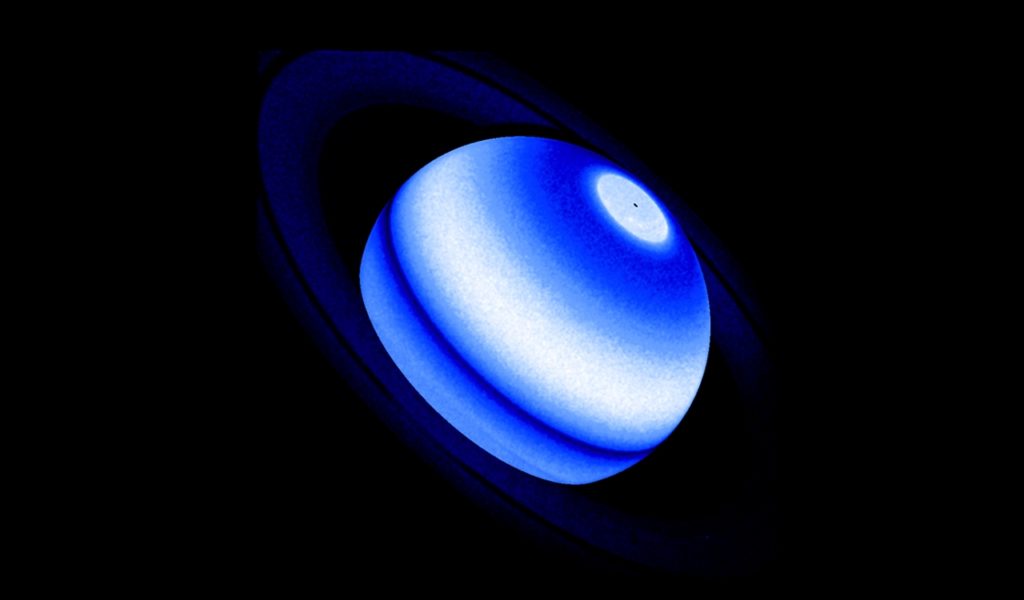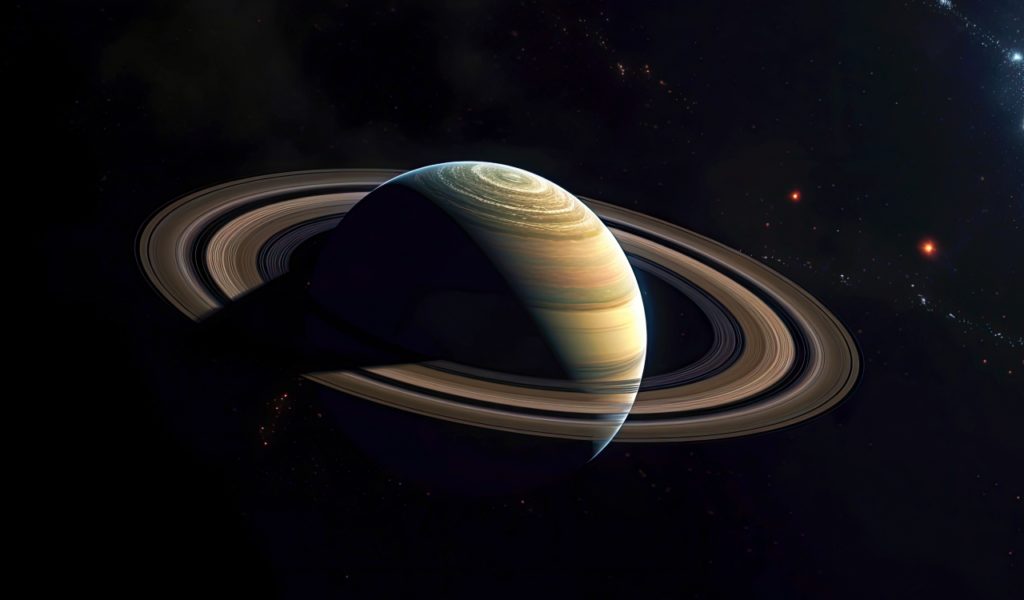Recently, researchers found an excess of ultraviolent emission coming from Saturn’s northern hemisphere. After doing further research, they now feel they know why this is happening. Those ultraviolet wavelengths might very well be due to Saturn’s beautiful rings.
We all tend to assume that since Saturn is farther from its Sun, it’s probably pretty cold out there. In spite of being a gas giant, this ideology isn’t exactly terrible. After all, Saturn does have some relatively icy moons nearby. On top of this, many of the rings surrounding Saturn are also icy too.
Ironically, it is these very rings that might be making Saturn warmer. The excess ultraviolet radiation found comes from hydrogen atoms. Known as Lyman-Alpha Radiation, this specific emission is the result of water ice.
Researchers feel that this water ice came from the rings and caused the atmosphere to warm up. Of course, that does not make sense, as H2O is not just a random name for water. The “H” stands for “Hydrogen” after all.
Key To The Discovery

How did researchers discover all of this? Ultimately, it came down to a few very reliable tools we’ve been using for a while, the Hubble Space Telescope & Cassini. Both observed Saturn at the same time back in 2017, which came right as Cassini went on its last mission, a death dive into Saturn.
Both observed the atmosphere at the time, and that offered key insight to the researchers. Astrophysicist at the Institut d’Astrophysique de Paris, Lotfi Ben-Jaffel, and his colleagues are responsible for the discovery. They actually calibrated the ultraviolet detectors on both spacecraft, as well as those used on Voyager 1 & 2.
If that was not enough, they also did the same for the International Ultraviolet Explorer, which is an Earth-orbiting satellite. It too observed Saturn, which meant the data collected by the team had to be immense for this.
While comparing the ultraviolet radiation found among these satellites & spacecraft, that was when they observed the band of Lyman-Alpha Radiation. They specifically found it at 5° to 35° N latitude on Saturn.
It’s truly hard to argue with the team from Paris, considering they worked on the machines that found these ultraviolet radiation differences. The question is not IF they found the radiation but how and why it is there ultimately. Their theory for why does have some major support though.
Learning More About Saturn’s Rings

Paul Estrada, a planetary scientist at NASA’s Ames Research Center, seems to be in support of Ben-Jaffel’s team. He feels that the extra ultraviolet flow reasoning seems plausible. Due to not being involved in their research and his standing at NASA, this is a useful person to have in your corner.
Estrada claimed:
“We know [that] material is falling in from the rings. Because Cassini detected it during the spacecraft’s spiral into Saturn. The rings are predominantly water ice. It may be the source of the atomic hydrogen, emitting the Lyman-alpha radiation that the researchers have detected.”
Ben-Jaffel claimed that when icy ring particles fall into Saturn’s atmosphere, they actually carry kinetic energy with them. That energy is then released to the surrounding gas. This is the energy managing to heat the atmosphere, giving Saturn its excess UV glow.
Along with this, there is a solid belief that UV wavelengths could be higher in the southern hemisphere too. While all of our giant planets in the solar system have rings, it seems that only Saturn has breathtakingly beautiful ring versions.
Jupiter and Neptune, while their rings do look cool, they don’t seem to stand out as much as what we have with Saturn. What we’re learning about these ringed planets is pretty compelling. The fact that we know rings can impact an atmosphere alone is interesting.
In other solar systems, there are planets considered “Earth-like” that have rings. How do those rings impact possible life on these planets? It is likely astronomers will find out eventually.
Resources: